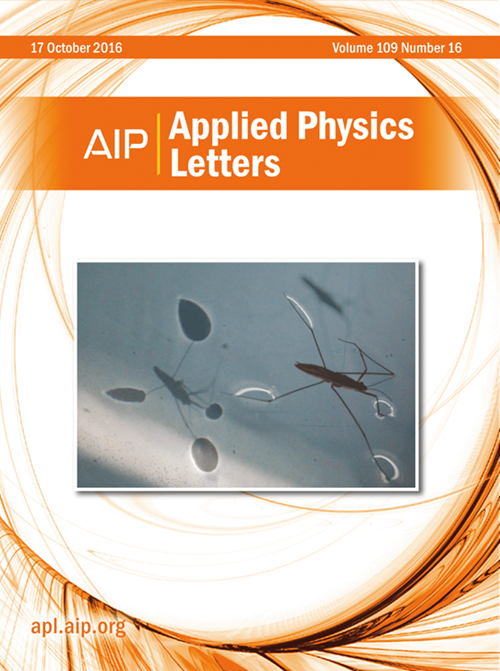Enhanced thermoelectric performance by Hf substitution in p-type half-Heusler TiNi0.8Co0.2Sn
IF 3.5
2区 物理与天体物理
Q2 PHYSICS, APPLIED
引用次数: 0
Abstract
The half-Heusler TiNiSn alloy is a promising candidate for thermoelectric power generation, capable of directly converting waste heat into electric power, due to its high thermoelectric performance over a wide temperature range from 500 to 1000 K. However, the thermoelectric performance of p-type TiNiSn is much lower than that of its n-type counterpart. Here, we demonstrate that Hf substitution in the p-type half-Heusler TiNi0.8Co0.2Sn alloy significantly enhances thermoelectric performance within the miscibility gap region of the binary TiNiSn-HfNiSn phase diagram. The Seebeck coefficient, which is below 80 μV/K for TiNi0.8Co0.2Sn, is substantially improved to 170 μV/K in Ti0.5Hf0.5Ni0.8Co0.2Sn at 650 K, owing to modifications in the electronic band structure induced by Hf substitution. Moreover, the lattice distortion and point defects introduced by Hf substitution effectively reduce thermal conductivity, from 5.0 W/mK for TiNi0.8Co0.2Sn to 3.3 W/mK for Ti0.5Hf0.5Ni0.8Co0.2Sn at 900 K. Consequently, the thermoelectric figure of merit (ZT) significantly increases from 0.03 for TiNi0.8Co0.2Sn to 0.26 for Ti0.5Hf0.5Ni0.8Co0.2Sn at 800 K. This enhancement of thermoelectric performance in p-type TiNiSn enables the construction of thermoelectric modules composed solely of half-Heusler TiNiSn based alloys, which are expected to exhibit high thermal stability useful for long-term thermoelectric power generation.求助全文
约1分钟内获得全文
求助全文
来源期刊

Applied Physics Letters
物理-物理:应用
CiteScore
6.40
自引率
10.00%
发文量
1821
审稿时长
1.6 months
期刊介绍:
Applied Physics Letters (APL) features concise, up-to-date reports on significant new findings in applied physics. Emphasizing rapid dissemination of key data and new physical insights, APL offers prompt publication of new experimental and theoretical papers reporting applications of physics phenomena to all branches of science, engineering, and modern technology.
In addition to regular articles, the journal also publishes invited Fast Track, Perspectives, and in-depth Editorials which report on cutting-edge areas in applied physics.
APL Perspectives are forward-looking invited letters which highlight recent developments or discoveries. Emphasis is placed on very recent developments, potentially disruptive technologies, open questions and possible solutions. They also include a mini-roadmap detailing where the community should direct efforts in order for the phenomena to be viable for application and the challenges associated with meeting that performance threshold. Perspectives are characterized by personal viewpoints and opinions of recognized experts in the field.
Fast Track articles are invited original research articles that report results that are particularly novel and important or provide a significant advancement in an emerging field. Because of the urgency and scientific importance of the work, the peer review process is accelerated. If, during the review process, it becomes apparent that the paper does not meet the Fast Track criterion, it is returned to a normal track.
 求助内容:
求助内容: 应助结果提醒方式:
应助结果提醒方式:


